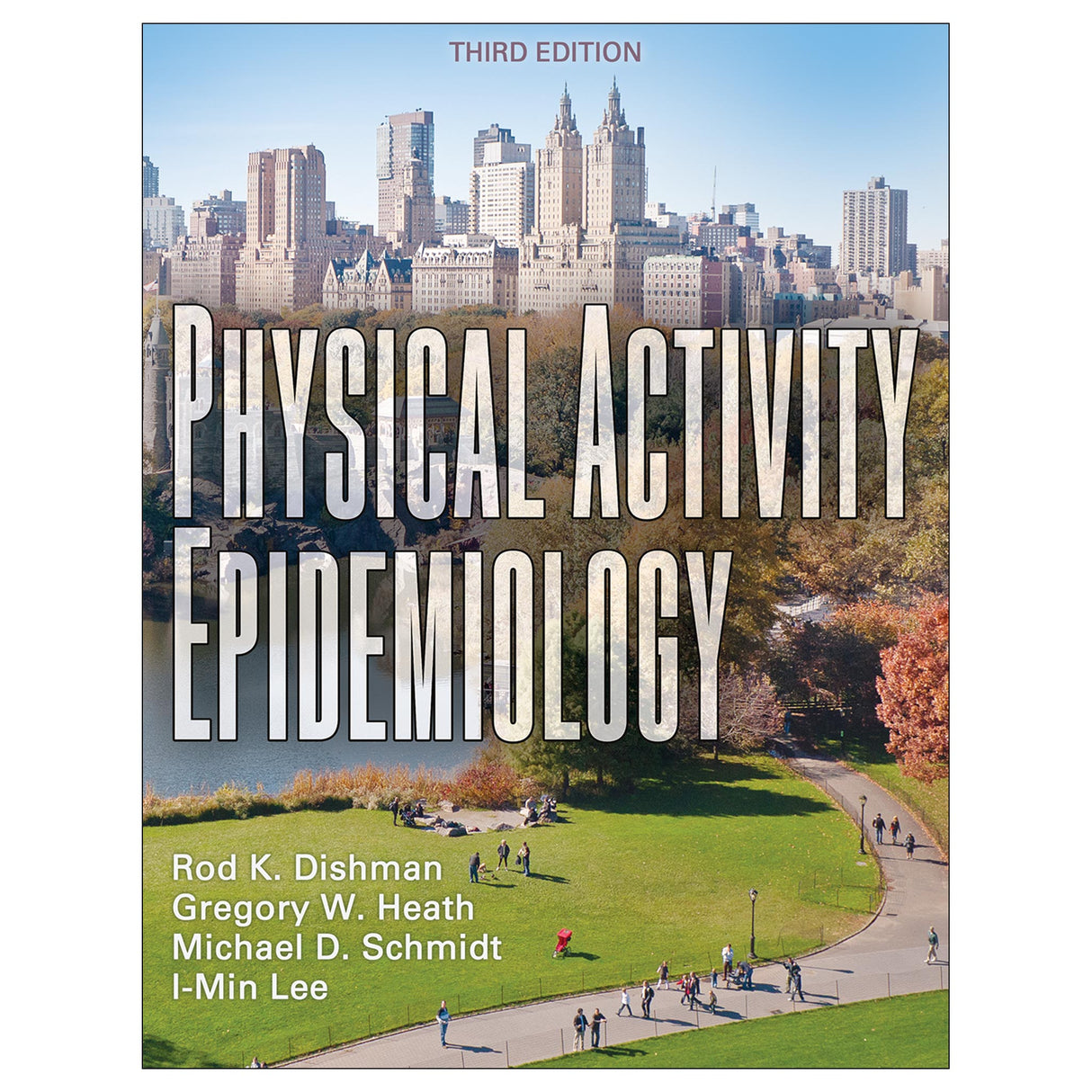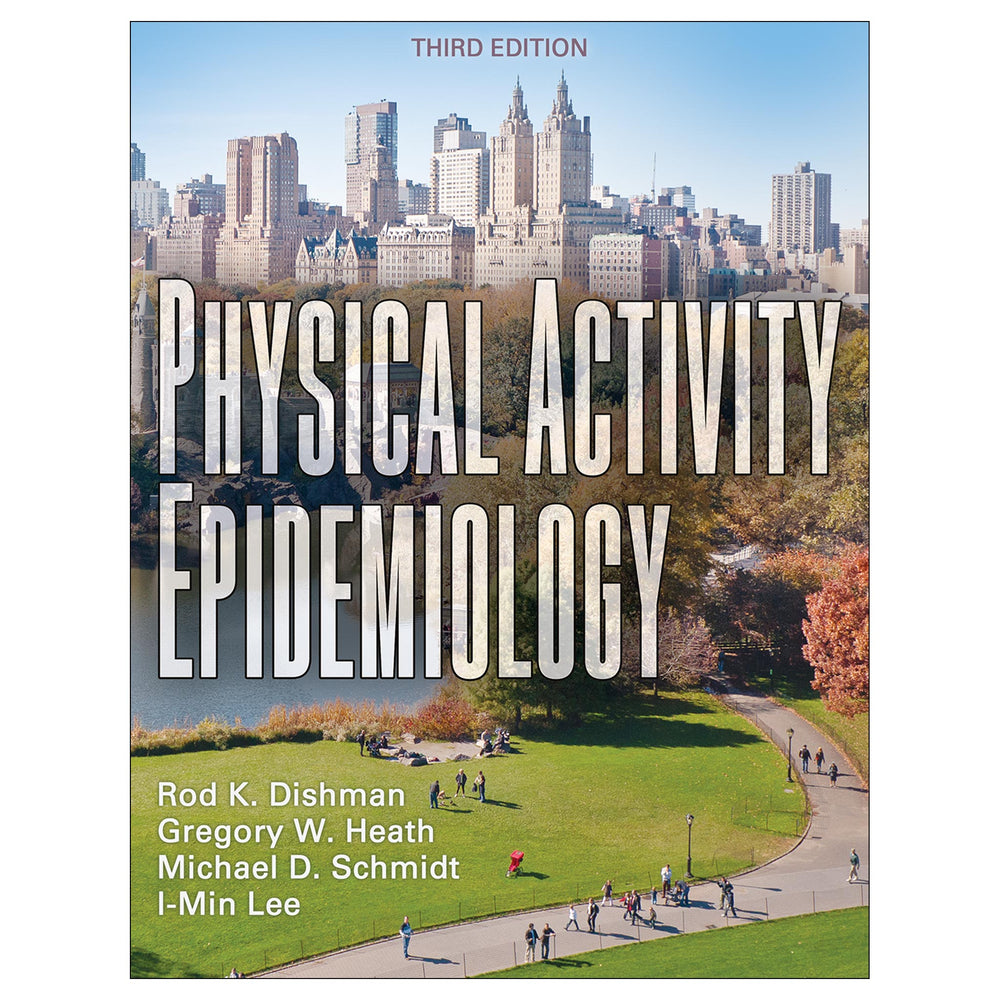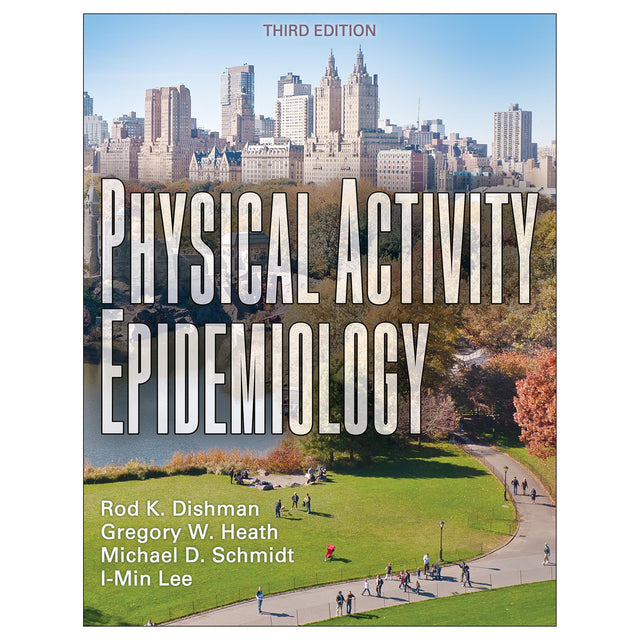Physical Activity Epidemiology-3rd Edition
$194.95 CAD
Physical Activity Epidemiology, Third Edition, explores how physical activity can enhance quality of life. The text summarizes the available knowledge, examines the methods used to obtain these findings, considers the implications for public health, and outlines the important questions that remain. Readers will find comprehensive discussions of these topics:
- Part I introduces physical activity epidemiology and provides an extensive background in research methods as well as physical activity measurement and surveillance.
- Part II focuses on the evidence that physical activity protects against premature death from all causes and inhibits the development of coronary heart disease and stroke.
- Part III offers population-based studies and clinical experiments providing evidence that physical activity plays a role in the prevention of hypertension, dyslipidemia, and obesity.
- Part IV compiles the latest data on two chronic diseases that are increasing in prevalence worldwide: type 2 diabetes and osteoporosis.
- Part V describes the evidence that physical activity is associated with reduced risks of certain cancers and explores the use of immunotherapy in cancer treatment.
- Part VI addresses mental health and the promotion of a safe, physically active lifestyle among all segments of the population.
Physical Activity Epidemiology, Third Edition, examines the methodology and findings of classic and contemporary studies and then helps students analyze the results. The special Strength of the Evidence sections summarize the findings to determine the extent to which correlation and causation can be proven. Chapter objectives, chapter summaries, sidebars, and a glossary assist students in finding key information. Instructors will find a test package, image bank, and downloadable learning activities to assist with student comprehension.
Physical Activity Epidemiology, Third Edition, offers a comprehensive presentation of significant studies, discusses how these studies contribute to understanding the relationship between activity and disease prevention, and explores how this information can be used in leading global society toward increased health and longevity.
Audience
Text for upper-level undergraduate and graduate students in exercise science, public health, and behavioral medicine; reference for academic libraries, sport and exercise scientists, health and fitness professionals, and public health administrators.Chapter 1. Origins of Physical Activity Epidemiology
Ancient History of Physical Activity and Health
Modern History of Physical Activity and Health
Physical Activity for Health Promotion in the United States and the World
Summary
Bibliography
Chapter 2. Concepts and Methods in Physical Activity Epidemiology
Epidemiologic Measures
Crude, Specific, and Standardized Rates
Research Design in Epidemiologic Studies
Evaluating Associations in Epidemiologic Studies
Models in Physical Activity Epidemiology
Inferring Cause in Epidemiologic Studies
Criteria for Causation
Summary
Bibliography
Chapter 3. Measurement and Surveillance of Physical Activity and Fitness
Why Is Behavioral Epidemiology Important?
What Is Physical Activity?
Measures of Physical Activity
What Is Sedentary Behavior?
What Is Physical Fitness?
Surveys and Surveillance of Physical Activity
Summary
Bibliography
Part II. Physical Activity and Disease Mortality
Chapter 4. All-Cause Mortality
Life Expectancy at Birth
Major Causes of Mortality
Physical Activity and All-Cause Mortality
Leisure-Time Physical Activity and All-Cause Mortality: Exemplar Cohort Studies
Resistance (Strengthening) Exercise and All-Cause Mortality
Device-Measured Physical Activity
Sedentary Behavior and All-Cause Mortality
Physical Fitness and All-Cause Mortality
Changes in Physical Activity or Fitness and All-Cause Mortality
Are the Associations Real?
Strength of the Evidence
How Much Physical Activity Is Needed to Decrease Risk of Premature Mortality?
Summary
Bibliography
Chapter 5. Coronary Heart Disease
History and Magnitude of the Problem
Coronary Heart Disease Risk Factors
Coronary Heart Disease Etiology
Physical Activity and Coronary Heart Disease
Sedentary Behavior and Coronary Heart Disease Risk
Physical Fitness and Coronary Heart Disease Risk
Individuals With Other Risk Factors or Existing Coronary Heart Disease
Physical Inactivity Compared With Other Risk Factors
Are the Associations Real?
Strength of the Evidence
How Much Physical Activity Is Needed to Decrease Coronary Heart Disease Risk?
Summary
Bibliography
Chapter 6. Cerebrovascular Disease and Stroke
Magnitude of the Problem
Risk Factors for Stroke
Etiology of Stroke
Treatment of Ischemic Stroke
Physical Activity and Stroke Risk: The Evidence
Strength of the Evidence
Summary
Bibliography
Part III. Physical Activity and Risk Factors
Chapter 7. Physical Activity and Hypertension
Magnitude of the Problem
Treating Hypertension
Hypertension Etiology
Autonomic Nervous System
Physical Activity and Reduced Hypertension Risk: The Evidence
Physical Activity and Treatment of Hypertension: The Evidence
Strength of the Evidence
Summary
Bibliography
Chapter 8. Physical Activity and Dyslipidemia
Magnitude of the Problem
Drug Treatment
Dyslipidemia Etiology and Physical Activity
Physical Activity and Lipoprotein Levels: The Evidence
Strength of the Evidence
Summary
Bibliography
Chapter 9. Physical Activity and Obesity
Magnitude of the Problem
Treatment of Overweight and Obesity
Assessing and Defining Overweight and Obesity
Etiology of Overweight and Obesity: Set Point or Settling Point?
Physical Activity and Fitness and the Health Risks of Obesity: The Evidence
Physical Activity and Prevention of Excess Weight Gain: The Evidence
Physical Activity and Weight Loss: The Evidence
Physical Activity and Weight Maintenance: The Evidence
Strength of the Evidence
The Ultimate Goal: Weight Loss or Risk Reduction?
Summary
Bibliography
Part IV. Physical Activity and Chronic Diseases
Chapter 10. Physical Activity and Diabetes
Magnitude of the Problem
Demographics of Diabetes
Clinical Features
Health Burden of Diabetes
Risk Factors
Insulin and Glucose Transport
Etiology of Type 2 Diabetes
Effects of Physical Activity on Diabetes Risk: The Evidence
Strength of the Evidence
Summary
Bibliography
Chapter 11. Physical Activity and Osteoporosis
Magnitude of the Problem
Fractures and Mortality
Etiology of Osteopenia and Osteoporosis
Bone Measurement Techniques
Risk Factors and Prevention
Pharmacotherapy for Osteoporosis
Physical Activity and Osteoporosis: The Evidence
Strength of the Evidence
Summary
Bibliography
Part V. Physical Activity, Cancer, and Immunity
Chapter 12. Physical Activity and Cancer
Magnitude of the Problem
Etiology of Cancer
Risk Factors
The Evidence for Physical Activity: Specificity of Protection?
Colon and Rectal Cancer
Breast Cancer
Lung Cancer
Endometrial Cancer
Physical Activity and Cancer Survivors
Summary
Bibliography
Chapter 13. Physical Activity and the Immune System
An Abridged History of Immunology
HIV and AIDS
The Immune System
Immunomodulation by the Nervous and Endocrine Systems
Immunotherapy in Cancer
Physical Activity and Immunity: The Evidence
Mechanisms of Alterations in Monocytes, Granulocytes, and Natural Killer Cells After Acute Exercise
Exercise and Cytokines
Summary
Bibliography
Part VI. Physical Activity and Special Concerns
Chapter 14. Physical Activity and Mental Health
Depression
Anxiety Disorders
Cognitive Function and Dementia
Summary
Bibliography
Chapter 15. Physical Activity and Special Populations
Physical Activity Among Diverse Racial–Ethnic Populations
Physical Activity and Disability
Inactivity and Aging
Physical Activity and Long-Term Health Among People With Disabilities
Role of Physical Activity in the Promotion of Health
Summary
Bibliography
Chapter 16. Adverse Events and Hazards of Physical Activity
Magnitude of the Problem
Evaluating Risk
Methods of Research
Myocardial Infarction and Sudden Death
Joint and Muscle Injury
Injury Features
Risk of Physical Activity Injuries: The Evidence
Other Medical Hazards
Psychological Hazards
Summary
Bibliography
Chapter 17. Adopting and Maintaining a Physically Active Lifestyle
Individual Barriers to Physical Activity
How Do People Decide to Be Active?
Environmental Barriers to Physical Activity
Genetics of Physical Activity
Environmental Intervention and Self-Regulation
Effectiveness of Physical Activity Interventions
Types of Interventions to Increase Physical Activity
Mediators and Moderators of Physical Activity Change and Interventions
Features of Physical Activity That Promote Adoption and Maintenance
Summary
Bibliography
—© Doody’s Review Service, 2023, Morgan L Wolff, MPH, University of Iowa College of Public Health (4-star review)
Mediators and moderators of physical activity change and interventions
Physical activity, exercise, and low-grade systemic inflammation
The effects of physical activity on osteoporosis
What are anxiety disorders?
All ancillaries are free to adopting instructors through HKPropel.
Test package. Contains a bank of 20 to 35 multiple-choice questions per chapter, plus additional short-answer response questions for each chapter. These open-ended questions may be downloaded to serve as learning activities to assign to students.
Learning activities. Contains questions that may be repurposed into short quizzes or group discussion prompts to further enrich the learning experience.
Image bank. Includes most of the figures and tables from the text, sorted by chapter. These can be used in developing a customized presentation based on specific course requirements.





